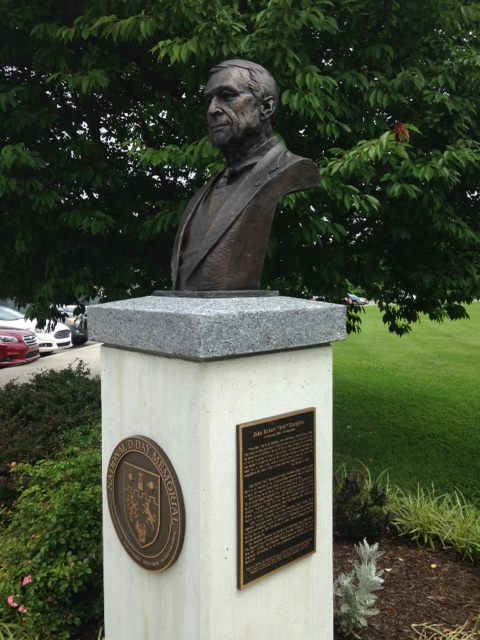John Robert “Bob” Slaughter was born in 1925 in Bristol, Tennessee. His family moved in the mid-1930s to Roanoke, Virginia. With his father in ill health and the Great Depression gripping the nation, Slaughter, at age fifteen, enlisted in the Virginia National Guard, earning a $30 monthly stipend to help his family. Assigned to Company D, 116th Regiment, Slaughter trained as a machine gun operator, but, as he later wrote, “there was no hint that any of us would ever see combat.”
In February 1941, the 116th was called into federal service for a year of intense training. Although America was still at peace, war raged in Europe, and the National Guardsmen would need to be prepared. With the Japanese attack on Pearl Harbor in December of that year, the Virginia citizen soldiers were in the Army for the duration, becoming part of the 29th Division.

Bob Slaughter, D-Day Veteran Founder of National D-Day Memorial
Shipped to England to train for a future cross-Channel invasion, Slaughter found the waiting hard to endure. He and some buddies volunteered for specialized service in a new, elite unit: the 29th Rangers. When the 29th Rangers were later deemed unneeded for the coming invasion, the men returned to their former units. Slaughter would later credit his Ranger training with making him a better soldier.
With the 116th chosen to be among the first to land on D-Day, at a section code-named Omaha Beach, Slaughter, a nineteen-year-old sergeant, found himself in command of a machine gun squad on June 6, 1944. While waiting to board his landing craft, Slaughter, like the men around him, received a printed copy of General Dwight D. Eisenhower’s encouraging Order of the Day: “I have full confidence in your courage, devotion to duty and skill in battle. We will accept nothing less than full Victory!” Inspired by his commander’s words, Slaughter took his copy around, collecting the signatures of seventy-five men in Company D. Only later would Slaughter realize that eleven of those men died on Omaha Beach; eleven more would die in the fight through France and into Germany. Slaughter carried the folded paper in his wallet through the war, later calling it his “most treasured memento of the war.” Donated by the Slaughter family and professionally conserved, the priceless piece of history is now in the collection of the National D-Day Memorial.




